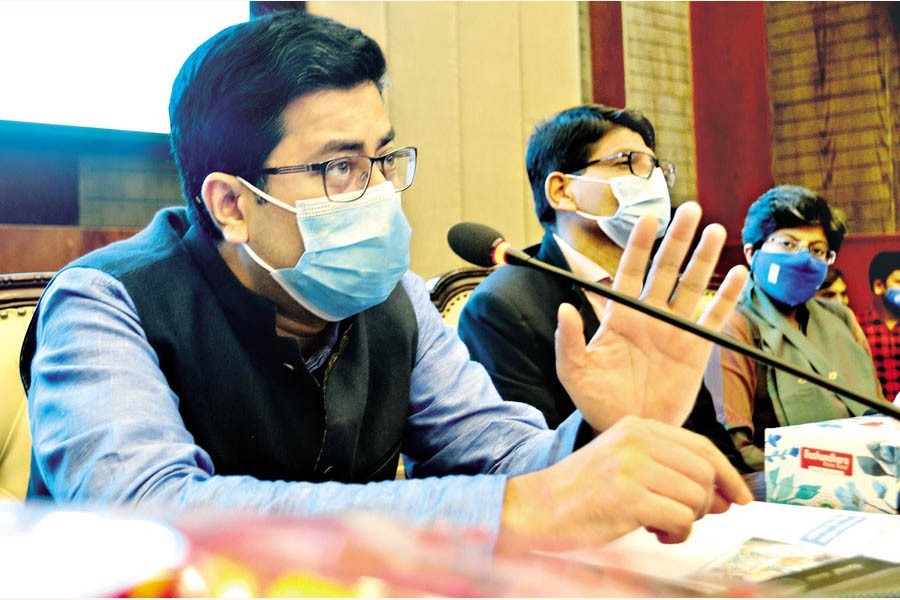United Nations Development Programme (UNDP) authority was compelled to revise the results of the urban poor settlement mapping in the Dhaka South City Corporation in the face of strong criticism and debate both from the councillors and the Mayor at a programme on Tuesday.
The programme was organised by UNDP at Mayor Mohammed Hanif auditorium at Nagar Bhaban to share the city level result-sharing workshop on urban poor settlement in the DSCC under its Livelihoods Improvement of Urban Poor Communities Project (LIUCP).
DSCC Mayor Barrister Fazle Noor Taposh was present as the chief guest there.
Disaster Management Watch (DM Watch) and Golam Mainuddin, a professor of Jahangirnagar University, prepared the ward and community wise poor settlement mapping in DSCC.
UNDP Town Manager Sohel Iqbal made the welcome speech where he said that it was found in 2020 that the gap between the rates of poverty reduction in the rural and urban areas were quite different.
Rural poverty reduction rate was 15 per cent while urban poverty reduction rate is 8.0 per cent.
As many as 1.2 million ultra poor people live in the Dhaka city, he said.
DM Watch team lead Bayezid Hasan made the first presentation on the findings.
He said there are 786 poor settlements in the 75 wards of DSCC where 0.34 million poor people live. The number of households is 71,346 in these poor settlements.
The mapping was done in 10 zones of DSCC, with 75 wards and 296 mahallas.
Of the 75 wards, the highest number of poor people live in ward 53, ward 33 has the highest density of poor people and ward 10 has no poor people.
There are 10 or less poor settlements in 54 wards, 10 to 20 settlements in 14 wards, 20 plus settlements in seven wards.
The numbers of poor settlements in wards 56, 24, 51 and 05 are 42, 41, 38 and 35 respectively.
The findings also showed that there are seven types of social resources in the mahallas amounting to 4037.
Of the total resources, the highest number is mosque which is 38 per cent, followed by schools 35 per cent, community facilities 14 per cent, health facilities 5.0 per cent, markets 5.0 per cent, waste management services 2.0 per cent and social services 1.0 per cent in the poor areas.
At the findings, the councillors strongly protested and showed anger at the presenter in the middle of the presentation while other presentation could not be made.
The councillors said that the mapping was not done by involving them.
The survey is very much under question as some of the findings were just contradictory to the reality.
The surveyors only communicated with the councillors for the signature for getting approval and the female councillors were never consulted during the process.
Mayor Taposh also raised questions on the survey and mapping method and identified various flaws.
He said that the main determinants of the survey were not right and those should be of global standard like per capita income and calorie intake; because the definition of the poor and ultra poor must be fixed first.
He also said there are 12 million population in DSCC. The survey is saying 0.34 million poor people only based on the infrastructure and utility services.
The Mayor instructed the UNDP representatives to involve the councillors and conduct the survey and finalise the mapping only after following due procedure and with signatures of the councillors.
The term poor settlements will also be changed into under developed settlements.
Answering a question whether there is any chance to manipulate the results by councillors, Mr Taposh said this type of concept was totally wrong and today's error of the findings occurred as the councilors were not involved in the mapping process.


